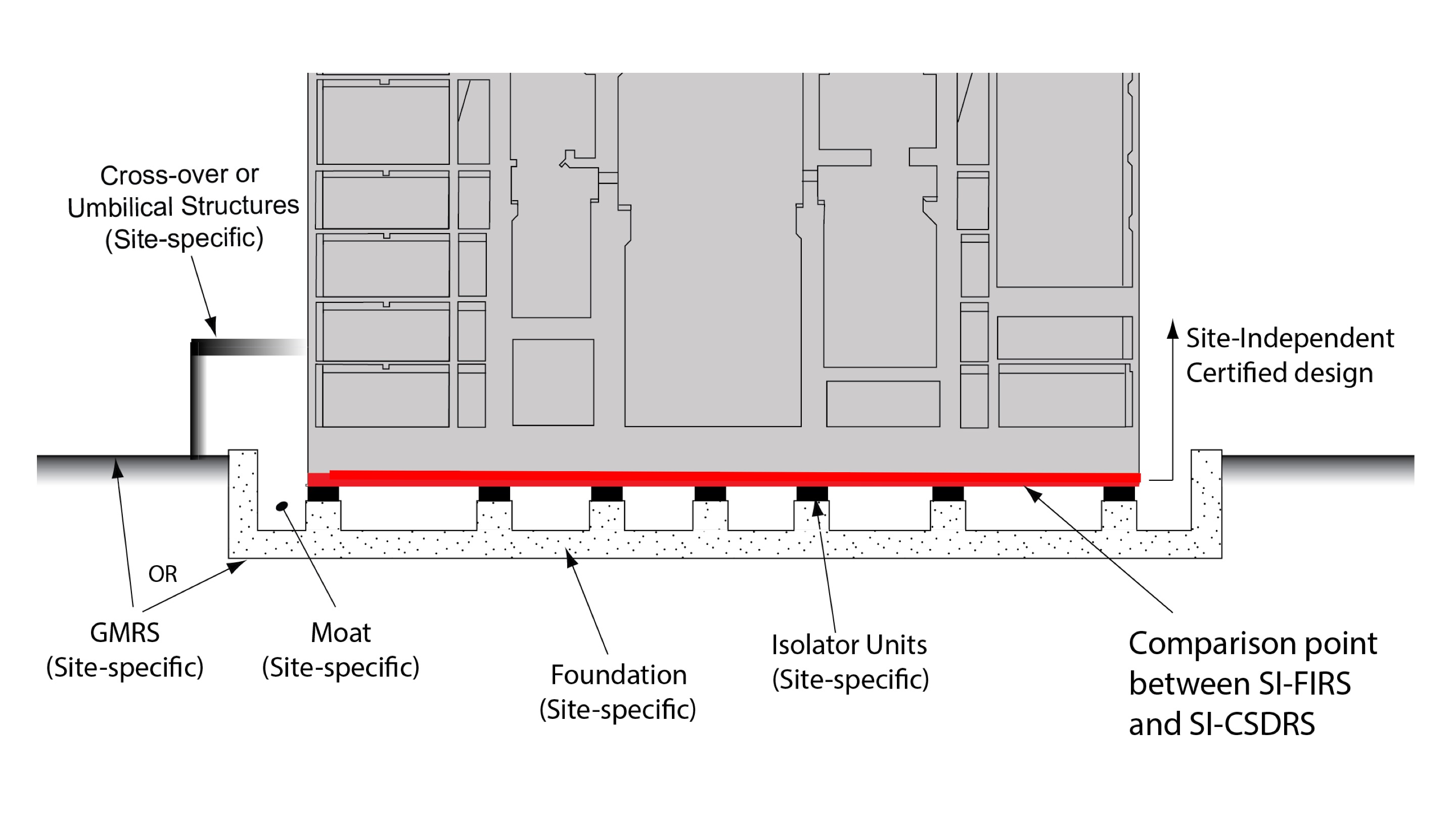
Overview
Seismic isolation (SI) has the potential to drastically reduce seismic response of structures, systems, or components (SSCs) and therefore the risk associated with large seismic events (large seismic event could be defined as the design basis earthquake (DBE) and/or the beyond design basis earthquake (BDBE) depending on the site location). This would correspond to a potential increase in nuclear safety by minimizing the structural response and thus minimizing the risk of material release during large seismic events that have uncertainty associated with their magnitude and frequency. Some potential benefits of SI are:
Substantially decoupling the SSC from the earthquake hazard, thus decreasing risk of material release during large earthquakes
Cost savings for the facility and/or equipment
Applicability to both nuclear (current and next generation) and high-hazard non-nuclear facilities
INL currently has two projects related to the implementation of SI in nuclear facilities. These are:
Identifying regulatory gaps to be filled for implementation of seismic isolation
Over the last decade, particularly since the implementation of the certified design regulatory approaches outlined in 10 CFR Part 52, interest in using seismic isolation (SI) technology to support seismic safety in nuclear facilities has been increasing. Because seismic isolation is being considered for nuclear power reactors in the United States (US), in 2009 the Nuclear Regulatory Commission initiated research activities to develop new guidance targeted at isolated facilities. That work, which was focused around a risk-informed regulatory approach, resulted in a draft NUREG report that investigated and discussed considerations for the use of SI in otherwise traditionally founded large light water reactors. The risk-informed design philosophy led to a set of proposed performance objectives and criteria that can serve as the foundation for future NRC guidance on the use of SI and related technology. The development of the draft NUREG was coordinated with development of new guidance in ASCE 4-14, which incorporated many of the same performance objectives. Both guidance documents are expected to be published in 2016.
The guidance provided in the draft NUREG and ASCE 4-14 provides a sound basis for further development of NPP designs incorporating SI. However, these first documents were focused on surface-mounted or near-surface-mounted large light water reactors and were, necessarily, limited in scope. For example, there is little or no information in either the draft NUREG or ASCE 4-14 related to vertical isolation systems, the isolation of individual systems or components, the isolation of deeply embedded reactors, or other types of nuclear facilities (e.g., small modular reactors). Also missing from the NUREG are special considerations for licensing of isolated facilities using 10 CFR Part 52 and special considerations for performing seismic probabilistic risk assessments for isolated facilities. As a result, the Advanced Reactor program at Idaho National Laboratory (INL) funded a small study and report to identify and explain technical and regulatory gaps that still exist and are outside the scope of any current NRC and ASCE efforts. This Report is focused primarily on identifying the gaps and challenges, and is intended to provide a roadmap for future activities. However, possible approaches or solutions have been provided in cases where they have already been identified.
Estimating the economic benefit of seismic isolation
The Seismic Research Group is using seismic PRA to evaluate the reduction in seismic risk and estimate the potential cost savings of seismic isolation of a generic nuclear facility. This project is leveraging other ongoing activities that are developing advanced seismic probabilistic risk assessment (PRA) methods using nonlinear SSI analysis.


